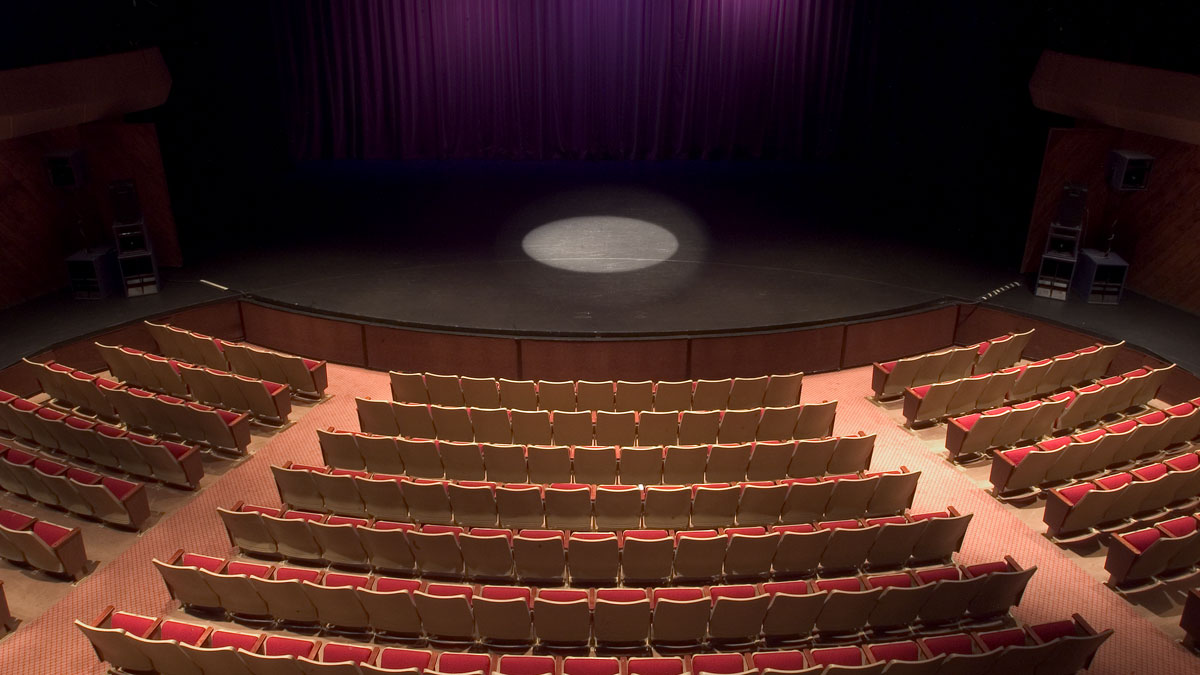 Supplied
SuppliedYou know the Myer Horowitz, right? The decrepit theatre you watched Interstellar in for free in second year then never went back into again? Maybe you’re among the 20ish per cent of students that would have cared to watch a wave of Students’ Union elect hopefuls haphazardly debate on stage.
With how rarely one might think it’s used, you might have been surprised to hear that the Myer Horowitz theatre (or ‘MyHo,’ if you’re cool and hip) is slated for a facelift costing $13 to $14 million with operations being completed in 2019. The catch is that up to a third of funding could be coming from students, while the rest would come from fundraising, donors, and grants. So, you, a smart and good reader of The Gateway might be thinking, “why is this theatre I’ve never been to getting MY money?” And in reality that’s the $13 to $14 million question.
The Myer Horowitz theatre is undoubtedly in need of an update. If you’ve ever walked around inside, you can quickly see why. Questionable stains on the drab, red, carpet; a seemingly Cold War-era programming and sound system that greets you with high-pitched screeches whenever anyone approaches a microphone, and unwelcoming and uncomfortable seats your parents probably complained about 20 years ago make the place feel lifeless. It needs an update for the shitty Wi-Fi alone. I wouldn’t be surprised if the Wi-Fi system was entirely comprised of a dozen hamsters running on wheels and an antenna held up by a hockey stick. How are we supposed to distract ourselves from things like the Horowitz renovations if we’re not constantly online? So much for attracting students to the theatre.
Since opening in 1967, the MyHo has only undergone two renovations: one overhaul in ’83 and a technical update in ’88. Do you realize how long ago that was? We hadn’t even been to the moon in 1967, and the last time major renovations happened was when Michael Jackson’s “Thriller” video aired on MTV.
For Robyn Paches, Students’ Union Vice-President (Operations and Finance), the Myer Horowitz renovation project has been like one of his sweet, sweet children this past year, and it was a project he campaigned on heavily during this year’s SU elections. He says the Horowitz can be a “major connection between the University of Alberta and the greater community” and a tool to “bring students back to campus.” Which is the furthest reach I’ve heard about the university since “these are going to be the best years of your life!”
One groundbreaking and totally non-gimmicky way Paches and Co. plan to raise MyHo funds is through a not-for-profit, “Friends of the Myer Horowitz.”
Showing off his hilarious definition of the word “exciting” Paches said, “this not-for-profit is also very exciting in the fact that anyone who ever gives to the theatre will become a member of this not-for-profit and then it gives you that ownership. So, if a student gives $10, they become a Friend of the Myer Horowitz, their name’s on the website, they can be a part of it, they get updates on the theatre, they know what’s going on, increases engagement, and really fosters that student-lead theatre.”
Because this idea sounds worthwhile and original, I want to help by proposing a few names that are far better than Friends of The Myer Horowitz:
• If You’re Not a Friend You’re an Enemy of the Myer Horowitz
• $10 poorer But Still Just as Sad Club
• Robyn Paches and the Invisible Children of the Myer Horowitz
It’s not hard to see Paches’ reasons for renovating the Myer Horowitz don’t really benefit a large population of students. Paches has talked about the Horowitz being used for alumni events, formals and semi-formals for frats, sororities, and the Business Faculty, and the most buzzwordy of all, “networking events.” So if you haven’t graduated, if you’re not from the Business Faculty like Robyn Paches, and if you’re not a member of your local Delta Chai Tea Latte chapter, how does this benefit you?
The main benefit we as students can look after is the type of talent a modernized Myer Horowitz could attract. At 720 seats, the theater is an intimate venue that could potentially host talent from Canada and elsewhere that wouldn’t normally come to a university venue. And having a modernized theatre that attracts those kinds of acts would expose students to a broader range of events they wouldn’t typically partake in. But is this aspect worth $14 million? It definitely hasn’t convinced me.




